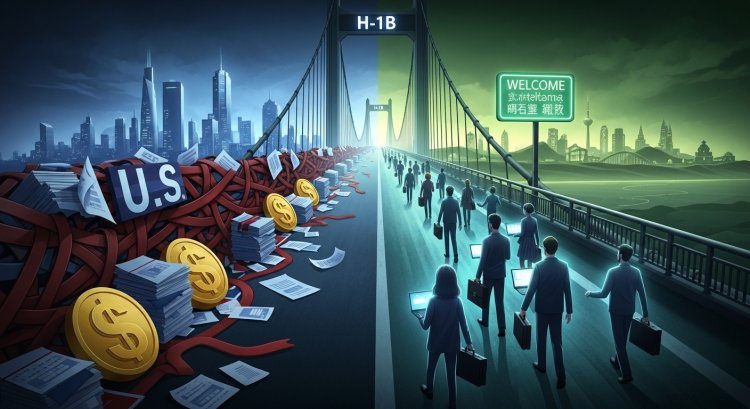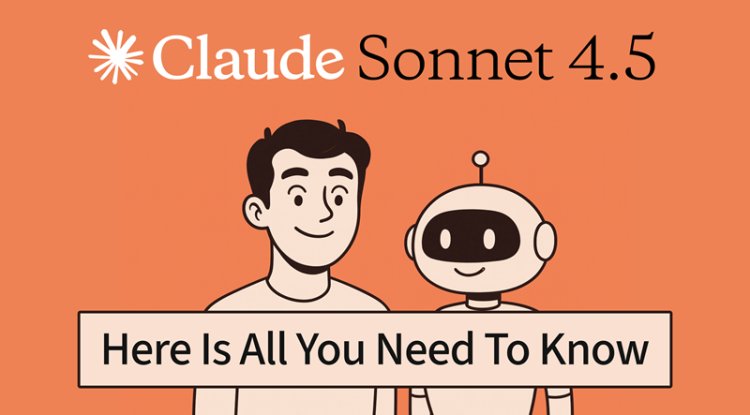How the New H-1B Rules Will Disrupt U.S. Tech and Push Talent Abroad
Uncover how new H-1B rules, including a $100k fee and weighted lottery, will disrupt U.S. tech, risk a brain drain, and push top global talent abroad

In September 2025, the Trump administration enacted sweeping changes to the U-1B visa regime, imposing a one-time $100,000 fee for new petitions and introducing a weighted lottery system favoring higher-paid roles. These changes, targeting new applications but not existing visa holders, are intended to curb competition and prioritize higher wage jobs. However, critics warn they may destabilize the U.S. tech ecosystem, discourage international students and professionals, and accelerate a global talent redistribution.
This article examines the new policy in depth, analyzes its immediate and long-term effects on U.S. employers and H-1B workers, and explores international consequences and strategic responses.
What Are the New H-1B Policy Changes?
1. $100,000 Fee for New Petitions
Effective 12:01 a.m. EDT on September 21, 2025, any new H-1B petition filed for a beneficiary outside the U.S. must be accompanied by a $100,000 supplemental fee.
The Washington Post
+5
USCIS
+5
The White House
+5
This is a one-time fee (i.e., not annual) and applies only to new petitions, not renewals or previously submitted ones.
Manifest Law
+4
USCIS
+4
Fred Law
+4
The proclamation also authorizes the Department of Homeland Security (DHS) and the State Department to enforce restrictions on entries unless the fee is paid.
The White House
+2
WilmerHale
+2
In initial reporting, Commerce Secretary Howard Lutnick had implied the fee might be annual. Still, the White House later clarified that it is a one-time charge applicable only to new petitions.
Manifest Law
+3
Reuters
+3
Business Insider
+3
2. Weighted Lottery Favoring Higher Wages
The traditional random lottery mechanism for cap-subject H-1B slots will be replaced by a wage-based selection system, giving higher chances to applicants whose salaries are higher.
Dice
+3
Boundless
+3
WilmerHale
+3
The rationale behind this change is to align visa allocation more closely with economic benefit, reducing the "abuse" of low-wage H-1B hires.
Boundless
+2
WilmerHale
+2
3. Scope, Exceptions & Clarifications
The new rules do not apply to existing H-1B visa holders, renewals, or petitions filed prior to 12:01 a.m. EDT on September 21, 2025.
The Economic Times
+7
USCIS
+7
Fred Law
+7
The proclamation includes a provision allowing DHS discretion to exempt individuals, companies, or industries deemed to be in the "national interest.
The White House
+1
There is legal uncertainty and potential challenges ahead, as the regulation was introduced via executive proclamation rather than through full regulatory rulemaking.
Fragomen
+3
Harris Sliwoski LLP
+3
Manifest Law
+3
Effects on U.S. Employers and H-1B Workers
1. Increased Costs & Strain on Budgets
The $100,000 supplemental fee is a major burden, especially for small startups, educational institutions, and nonprofit organizations that rely on foreign talent. Many of these entities operate with tighter resources and cannot absorb such a steep cost.
Some companies have already responded: Intuitive, a Silicon Valley medtech firm, paused its H-1B hiring across multiple job types, citing the new fee.
Business Insider
JPMorgan economists warn the step could jeopardize thousands of jobs and reduce the flow of immigrant work authorizations.
The Times of India
Analysts project that many firms will either reduce H-1B hiring, shift to offshore offices, or increase investment in domestic recruitment and automation.
2. Deterrence of New Talent & Brain Drain Risk
Prospective applicants—especially recent graduates or early-career professionals—are likely to rethink the U.S. as a destination. The hurdle of a steep fee and a competitive lottery may push them toward more welcoming countries.
The uncertainty around immigration policy could dissuade top international students from remaining in the U.S. after completing studies, weakening the STEM pipeline.
In India, the government has publicly flagged the humanitarian consequences of potential family disruptions caused by forced relocation or denial of visas.
Al Jazeera
3. Emphasis on High-Wage & Senior Roles
The weighted lottery will favor higher-salaried jobs. That means senior or managerial professionals will benefit, but entry-level or junior H-1B candidates may have much lower chances.
Historically, many H-1B visas were awarded to early-career workers (for example, fresh master's graduates). The new rules shift the advantage toward more remunerative roles, potentially altering recruitment patterns across industries.
4. Distortion of Labor Markets & Innovation Risks
Critics warn that the changes may curb U.S. innovation by restricting access to global talent. Startups and research labs relying on foreign specialists in AI, quantum computing, biotech, etc., may be forced to relocate or delay projects.
The policy could encourage offshoring, remote work, cross-border, or the establishment of R&D centers in countries with friendlier visa laws.
Some companies have already advised H-1B workers to avoid international travel amid confusion.
Tech.co
+2
Reuters
+2
Because the reforms apply only to new petitions, existing visa holders and ongoing projects may remain unaffected on paper, but behavioral shifts may ripple quickly.
5. Clarifications & Potential Misunderstandings
The White House and U.S. Citizenship and Immigration Services (USCIS) clarified that the fee is not retroactive and doesn't apply to renewals or current visa holders.
WilmerHale
+4
Reuters
+4
Business Insider
+4
However, initial ambiguity led many companies (including Microsoft) to urge H-1B employees abroad to return quickly before the effective date.
Tech.co
+3
Business Insider
+3
Business Insider
+3
Some uncertainty remains—particularly around change-of-employer petitions, extensions, and whether legal challenges may delay or block enforcement.
Manifest Law
+2
Harris Sliwoski LLP
+2
International & Global Talent Impacts
Canada: A Beneficiary
With the U.S. raising barriers, Canada is widely viewed as a major alternative destination for skilled professionals. Immigration lawyers already foresee increased demand for Canadian work/immigration programs.
The Times of India
+1
Canada's comparatively more open immigration paths and aggressive talent attraction strategies may accelerate this shift.
India: Major Stakeholder & Impacted Nation
India is by far the largest country of origin for H-1B recipients. The policy shift threatens jobs and opportunities for thousands of Indian tech professionals.
The Guardian
+3
The Washington Post
+3
Kodem Law
+3
The Indian government has expressed concern over family separation, loss of remittances, and geopolitical implications.
Al Jazeera
Indian IT service firms, which have long leveraged H-1B workers to support U.S. clients, may need to rethink staffing models, invest in onshore hiring, or carve out alternative geographies for growth.
China & Other Countries
China has in recent years sought to bolster its own visa and talent programs to retain and attract STEM graduates. The U.S. tightening its H-1B policies plays into that competitive narrative.
Other countries across Europe, Asia, Australia, and the Gulf may benefit from the redirection of global technical talent.
The cumulative effect could intensify a global redistribution of skilled labor—no longer automatically funneling top talent toward the U.S.
Strategic Responses & Mitigation Tactics
Pivot to alternative visa categories.
Employ more O-1 (extraordinary ability) or EB-1 petitions for top talent. These paths bypass the H-1B lottery.
For startups or critical projects, lobby for national interest waivers or exemptions per the proclamation's discretionary clause.
Shift hiring strategy
Rely more on remote/hybrid work with overseas talent rather than sponsoring U.S. visas.
Develop more local talent pipelines and invest in upskilling programs domestically.
Create or expand U.S. R&D or satellite offices in other favorable jurisdictions.
Lobbying and legal action
Industry groups, universities, and tech consortia are likely to mount legal challenges.
Lobbying Congress to restore or modify the H-1B program could generate countermeasures.
Risk management & planning
Companies should analyze which roles are most vulnerable under the new regime and prioritize sponsorships accordingly.
Budget for increased costs, delays, and alternate hiring contingencies.
Carefully manage travel and assignment policies for current and prospective H-1B workers, given policy ambiguities.
Outlook & Risks
Some legal experts predict court injunctions may block or delay enforcement of the $100,000 fee requirement.
Fragomen
+3
Harris Sliwoski LLP
+3
Manifest Law
+3
If enforced, the changes could dampen U.S. productivity growth. Economist forecasts warn of growth downgrades.
The Guardian
The longer the U.S. remains a less attractive destination for AI talent, quantum researchers, biotech innovators, etc., the more structural disadvantage it may accrue globally.
On the flip side, if the weighted lottery encourages higher wages and discourages abuses, the reforms may prompt more merit-based do
allocation—but at the cost of inclusivity and access.
Conclusion
The 2025 H-1B reforms—anchored by a steep new $100,000 fee and a wage-weighted lottery—represent likely the most significant overhaul to the U.S. temporary skilled visa system in decades. While the stated aim is to protect domestic workers and curb misuse of the H-1B program, the likely collateral damage includes disrupted tech hiring, reduced immigration, brain drain, and shifts in global talent flows.
Employers, prospective visa applicants, and policy watchers must closely monitor legal developments, adjust hiring strategies, and be ready to operate in a more constrained and competitive immigration environment.
What's Your Reaction?

















